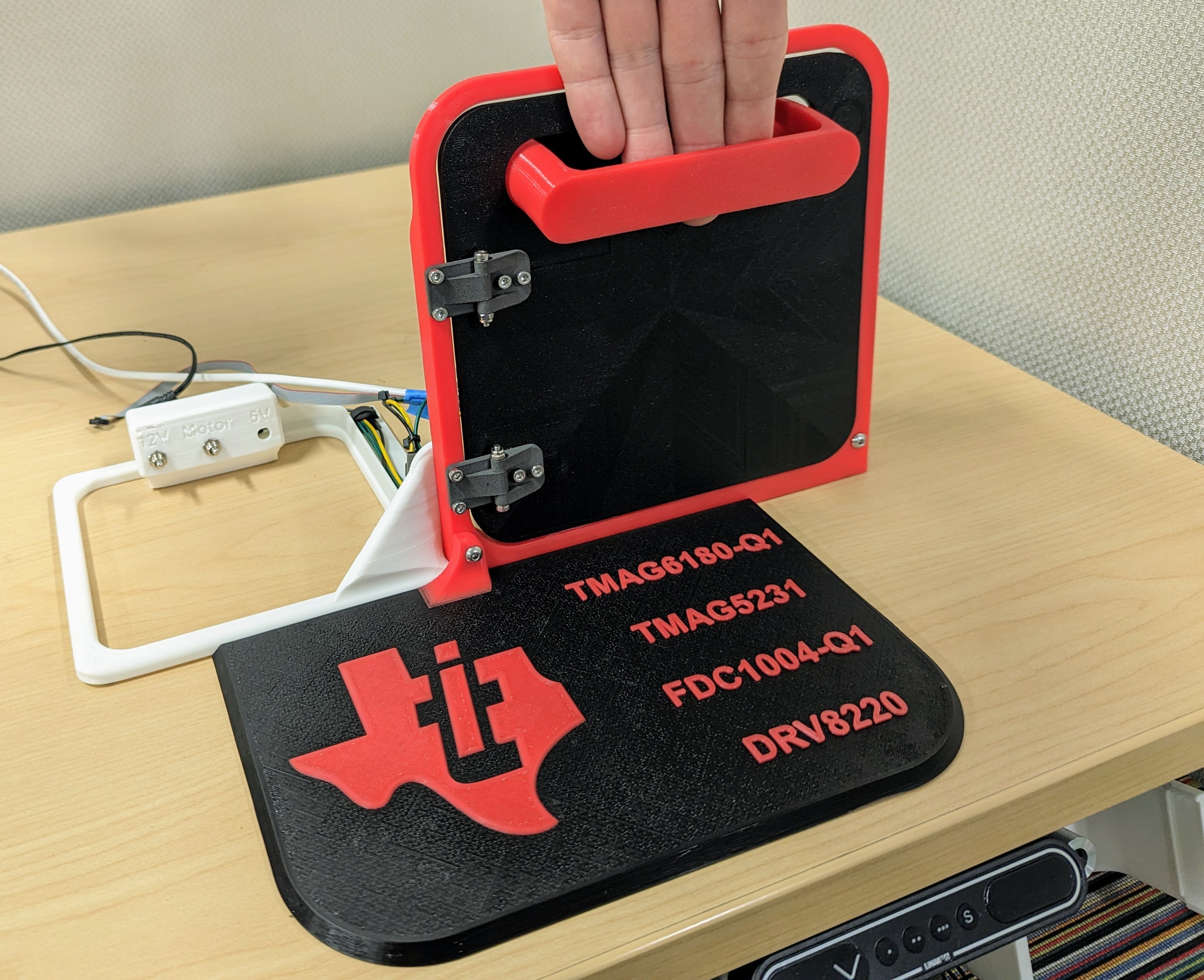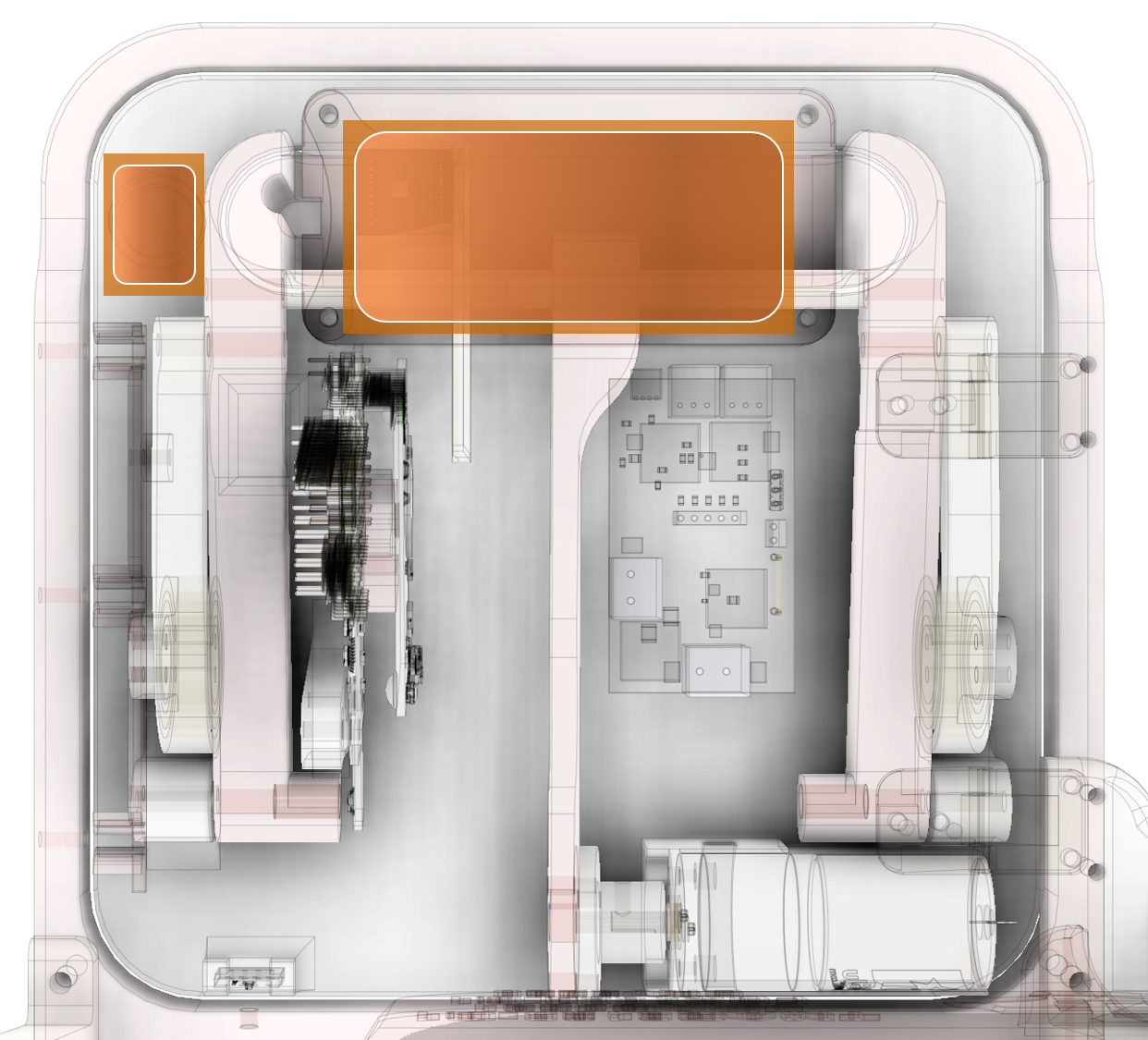SNOAAA5 April 2024 DRV8220 , FDC1004-Q1 , LDC3114-Q1 , TMAG5131-Q1 , TMAG5173-Q1 , TMAG6180-Q1
- 1
- Abstract
- Trademarks
- 1Introduction
- 2Automotive Door Handle Architectures
- 3Functional Demo Design
- 4Detailed Design Flow for Door Handle Functions
- 5Summary
- 6References
4.3.2 Examples of Soft-Touch Detection Based on Capacitive Sensing in a Door Handle Demo
While the last section gave an overview of capacitive sensing, this section can provide an example of capacitive sensor design used in a Figure 4-17, and in the associated Position Sensing in Automotive Door Handle Systems, application brief. Figure 4-17 shows a photo of the door handle demo, which uses capacitive touch detection for two functions. One function is a soft touch button that allows the user to lightly touch a designated surface on a car door, which in turn unlocks and or opens the door. In the door handle demo, this touch surface is located just to the right of the pop-out door handle. This touch function is in contrast to the more familiar push-button that requires some small force of actuate the button function (covered in a subsequent section of this application note). The second use of capacitive sensing in the demo is to detect the presence of a hand inside the pop-out door handle which can then allow the door to open and also keep the door handle from retracting back into the door surface.
 Figure 4-17 Car Door Handle Demo
Figure 4-17 Car Door Handle DemoHow are the capacitive sensors implemented in our door handle demo? Figure 4-18 shows a virtual rendering of the back side of the demo, with the capacitive sensors displayed as copper-colored rectangles in the upper fourth of the image. The small rectangular sensor on the left is used to detect the increased capacitance due to a user's finger touching the designated touch-button surface to the right of the door handle on the outside surface. The larger rectangle is positioned on the inside surface of the cavity used to accommodate the retracted door handle. The large rectangular sensor is used to detect the increased capacitance due to the presence of a user's fingers on the inside surface of the popped-out handle. The demo housing is a polycarbonate resin with a relative permittivity of five (εr = 5) with respect to free space.
 Figure 4-18 Back Side of Car Door Handle Demo with Copper Capacitive Sensors Highlighted
Figure 4-18 Back Side of Car Door Handle Demo with Copper Capacitive Sensors HighlightedThe capacitive sensors were developed with a little-trial-and-error, but it is possible to get close on a first try using the parallel plate equation given in Equation 2.
In the following analysis for the touch button and the door handle, we assume the user's fingers or hand act as a ground plane with respect to the sensors located on the inside surface of the door. The fingers or hand serve as the secondary plate in capacitor equation shown in Equation 2. We make the additional simplifying assumption the finger or hand present an area identical to the sensor on the inside surface of the door.